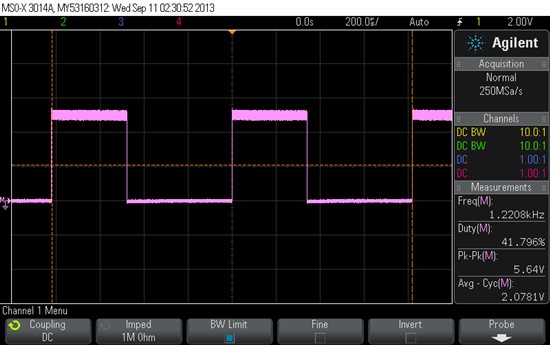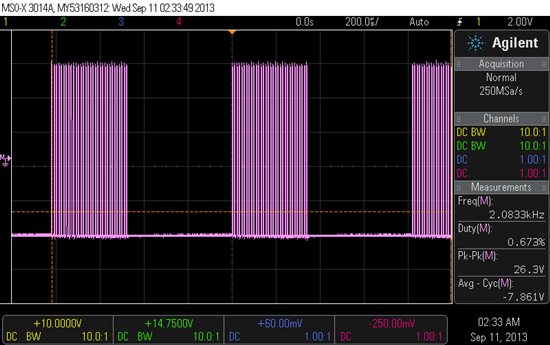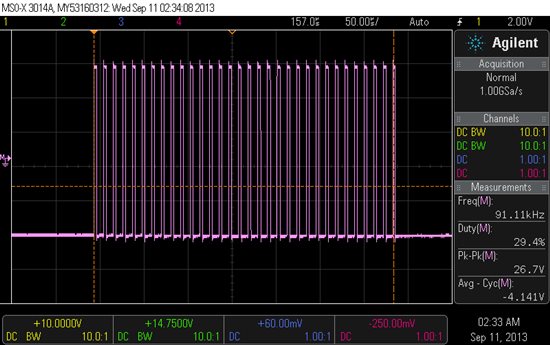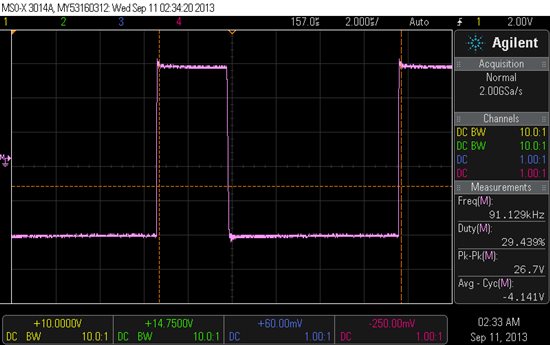Hi,
I'm having problems getting the ISO5500 to work as described in the datasheet.
I'm trying to use this module to amplify a 0~5V PWM signal from a microcontroller (PIC16F) to a -10/+10V voltage level, in order to interface with another DC motor driver that accepts -10/+10V analog input. I realized of course that I could only amplify successfully to a -12/+12 V because of the UVLO constraint on (Vcc2 - Ve).
The inputs to Vin+ and Vin- are two PWM outputs from the PIC in differential signal form. eg pwmA: 0~5V, pwmB:0V. The idea is to interchange between which channel is active in order to create both negative and positive PWM output. Vcc1 and GND1 are 5V 0V respectively. Vcc2 is say, 24V relative to GND2 (i.e. Vee-l, Vee-p), and I just set up the circuit from fig.62 of the data sheet.
Firstly, I'm observing on my oscilloscope, that the ouput waveform is not the input with amplification. In fact the output seems to be modulated by a chopping frequency of a about 92KHz. The input PWM has 42% duty at 1.2KHz, and ony on very large time scales does the oscilloscope show this. Where does the chopping frequency originate from? The datasheet makes no mention of this.
Secondly, the average value on the output is nowhere near the intended value. In fact, despite having the voltage levels at (relatively) expected levels, the average value shown by the oscilloscope is the negtive ouput rail (-12V relative to Ve).
I know this is not its intended function, but from the datasheet I surmised that it would be feasible to create the intended amplification. If there are any suggestions either using the ISO5500 or even any other topology it would prove invaluable. I have been at this for almost 3 weeks straight and I cant seem to make it work.
The reasoning for not using just an op-amp topology is that i require differential input with high input resistance and also need differential output. The only solution close to this was a instrumntation amp circuit, but I could only achieve said waveform by connecting the PIC gnd to the 10V ref ( so that input common was at 10V so op-amps could function properly). Because of the requirement for isolation I came by the ISO5500.
Thanx.





